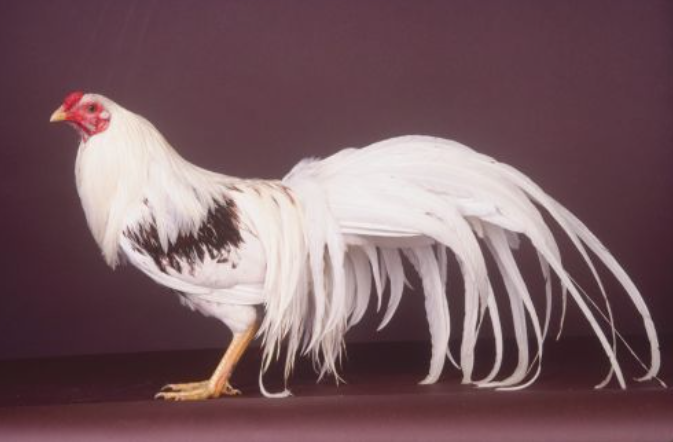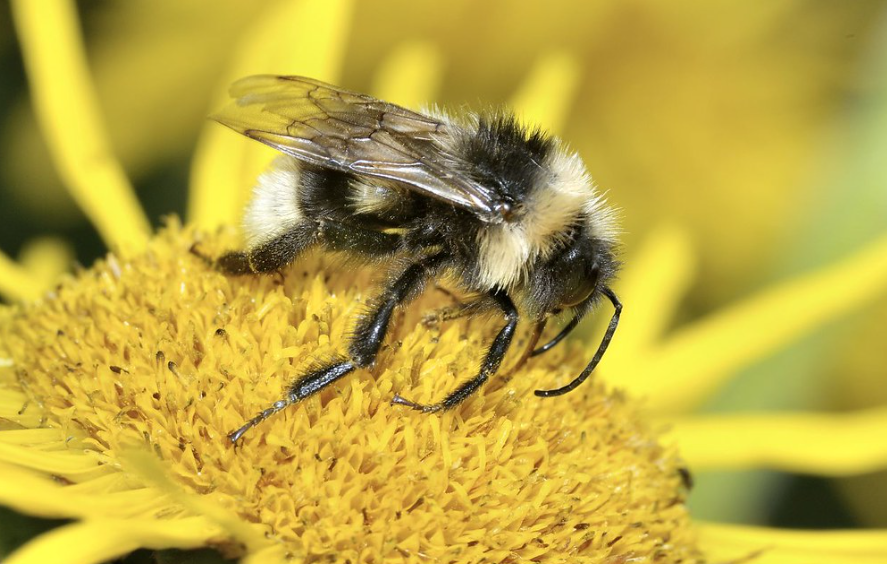Quick Top 10 Facts about Spotted Lanternfly
| SCIENTIFIC NAME | Lycorma delicatula |
| CLASSIFICATION | KINGDOM: Animalia PHYLUM: Arthropoda CLASS: Insecta ORDER: Hemiptera FAMILY: Fulgoridae GENUS: Lycorma SPECIES: L. delicatula |
| SIZE | Length: 0.75–1 inch (2–2.5 cm) |
| HABITAT | Forests, orchards, and agricultural fields; primarily found on trees and woody plants |
| DIET | Herbivorous; feeds on sap from a wide range of plants and trees, including grapes, maples, and fruit trees |
| SPECIES | Spotted Lanternfly, an invasive planthopper native to China, India, and Vietnam |
| COUNTRY | Native to Asia; invasive in the United States and parts of South Korea |
| GESTATION PERIOD | Eggs hatch in late spring after overwintering; life cycle completes in about one year |
| LIFE SPAN | Approximately 1 year |
| CONSERVATION STATUS | Not endangered; considered a serious invasive pest |
Amazing Facts About Spotted Lanternflies
1. Spotted Lanternflies are strong jumpers
Although they have wings, Spotted Lanternflies prefer to jump short distances rather than fly.
2. Their wings are colourful
While their forewings are grey with black spots, their hindwings reveal vivid red patches, making them striking when in flight.
3. They are invasive pests
Spotted Lanternflies pose a serious threat to agriculture and native ecosystems in areas they invade.
4. They feed on plant sap
Using specialised mouthparts, Spotted Lanternflies pierce plant tissues to extract sap, weakening plants over time.
5. Their presence leads to sooty mould
Excessive sap feeding causes plants to exude honeydew, which promotes the growth of harmful sooty mould.
6. They have no natural predators in the U.S.
The lack of predators has allowed their populations to explode in invaded regions.
7. Eggs can be hard to detect
Spotted Lanternfly egg masses resemble patches of mud, making them easy to overlook.
8. They impact vineyards
Grapevines are particularly susceptible, leading to significant damage in wine-producing regions.
9. Control efforts are ongoing
Scientists and agencies are actively researching biological control methods, including natural predators and fungi.
10. Public involvement is crucial
Authorities encourage citizens to report sightings and destroy egg masses to help control the spread.
An Invasive Danger to Agriculture and Ecosystems: Spotted Lanternflies
In many regions of the globe, especially in the US, the invasive spotted lanternfly (Lycorma delicatula) has become a serious annoyance. Indigenous to China, India, and Vietnam, the spotted lanternfly was first observed in the United States in 2014, specifically in Pennsylvania. Since then, it has expanded rapidly, posing a threat to both natural ecosystems and cultivated crops. In recent years, the spotted lanternfly has earned a reputation as one of the most alarming invasive species due to its remarkable appearance and destructive behaviour.
The Spotted Lanternfly: What is it?
The spotted lanternfly belongs to the Fulgoridae family of planthopper insects. Despite its name, it is not a fly but an insect. Although native to certain areas of Asia, it has spread to North America and other regions. Due to its extreme adaptability and the wide range of plants it feeds on, this insect is particularly harmful to agriculture and forests.
The spotted lanternfly gets its name from its unusual appearance. It has large red, black, and white-spotted wings that, when folded, resemble a lantern or shade. Along with its broad range of host plants, its ability to reproduce quickly makes it a difficult pest to control.
Physical Features of the Spotted Lanternfly
The spotted lanternfly undergoes three phases of development: egg, nymph, and adult. The physical traits of each of these stages are distinctive, which helps in identifying the insect:
Eggs
- The spotted lanternfly lays its eggs in large clusters, typically containing between 30 and 50 eggs.
- The oval-shaped eggs are covered in a grey, waxy material that hardens over time, allowing them to blend in with outdoor furniture, tree bark, and rocks.
- In late autumn, egg masses are usually found on tree trunks or other surfaces.
Nymphs
- The spotted lanternfly’s nymphs undergo four instars or developmental stages.
- The early instars are black with white markings. As they mature, they become red with black markings.
- During this stage, nymphs are less mobile and are often seen on the leaves and stems of their host plants.
Adults
- The adult spotted lanternfly measures around 1 inch long, with greyish wings and black dots on the forewings.
- When the insect flies, red and black dots on the hindwings become visible.
- Although adults can fly short distances, they generally remain near their host plants.
Reproduction and Life Cycle of the Spotted Lanternfly
The life cycle of the spotted lanternfly is marked by several developmental stages and rapid reproduction:
Egg Stage
- In autumn, from late September to early November, the spotted lanternfly lays its eggs on hard surfaces such as tree bark or outdoor equipment.
- Egg masses are commonly found on outdoor objects like tree trunks, rocks, and wooden surfaces.
- The eggs hatch in spring, and the nymphs emerge in April or May, marking the start of the active growth season.
Nymph Stage
- After hatching, nymphs undergo four instars, starting as small black and white-spotted insects.
- As they mature, they grow larger and redder, resembling adult lanternflies by the fourth instar.
- Nymphs often gather in groups and feed on the sap of various trees and plants.
Adult Stage
- During late summer, nymphs molt into their adult forms.
- Adults remain active throughout the autumn, feeding on tree sap, mating, and laying eggs to complete the life cycle.
- The adult stage is the most mobile, as the insect can fly short distances and spread to new locations.
Winter Dormancy
- The eggs of the spotted lanternfly remain dormant over the winter.
- The insect’s life cycle pauses until the following spring when the eggs hatch and the nymphs emerge again.
Host Plants of the Spotted Lanternfly
The spotted lanternfly can feed on a wide variety of plants, including trees and agricultural crops. This ability to consume so many different plants contributes to its rise as an invasive pest. Over time, the insect weakens plants and causes significant damage by sucking sap from them with its piercing mouthparts. Notable host plants include:
Tree-of-Heaven (Ailanthus altissima)
- The tree-of-heaven is the primary host plant for the spotted lanternfly and is commonly found in areas of the United States where the insect is prevalent.
- Being an invasive species itself, the tree-of-heaven worsens the problem by facilitating the lanternfly’s spread.
Grapevines (Vitis vinifera)
- The spotted lanternfly poses a serious threat to grapevine harvests by feeding on their sap.
- This weakens the vines, resulting in lower yields and poorer-quality fruit, which severely impacts the wine industry.
Apple Trees (Malus domestica)
- Spotted lanternfly infestations also endanger apple orchards by damaging fruit, increasing disease susceptibility, and hindering growth.
Other Host Plants
- Although the tree-of-heaven is the preferred host, other trees and plants such as oak trees, maple trees, black walnuts, hops, pine trees, and willows can also serve as hosts for the lanternfly.
Effects of the Spotted Lanternfly on the Environment and Economy
The spotted lanternfly’s rapid spread has caused significant ecological and economic effects, especially in areas where it has become established. The primary consequences include:
Damage to Agriculture
- The spotted lanternfly causes damage to crops like grapevines, apple orchards, and hops.
- Feeding on plant sap results in various issues, such as reduced crop yields, poorer fruit quality, and increased disease vulnerability.
- This has a significant impact on industries like viticulture and apple farming, where the lanternfly threatens both production and quality.
Threat to Forests
- The spotted lanternfly harms natural forests by feeding on various trees and plants, which leads to stress and dieback in species like oak, maple, and black walnut.
- This reduces biodiversity and negatively affects forest ecosystems, impacting wildlife that rely on these trees.
Economic Costs
- Managing the spotted lanternfly infestation incurs high financial costs, as methods like chemical control, biological control, and trapping are used.
- The costs of these measures, combined with lost agricultural output, add to the economic burden, particularly in the wine, apple, and hops industries.
Management and Control of the Spotted Lanternfly
Various strategies are being employed to stop the spotted lanternfly’s spread and reduce its impact. Current management and control efforts include:
Chemical Control
- Pesticides are a common method for managing spotted lanternfly populations, targeting the insect at various life stages, from eggs to adults.
Biological Control
- Ongoing research is focused on developing biological control strategies, including introducing natural predators or parasites, such as parasitoid wasps, to target lanternfly eggs with precision.
Trapping
- Traps are set up to capture adult lanternflies and reduce their numbers, particularly by hanging traps on trees or other host plants.
Public Awareness
- Raising public awareness about the risks of transferring infected items, such as firewood, outdoor furniture, and plants, has been crucial in slowing the spread of the spotted lanternfly.
FAQ (Frequently Asked Questions) about Spotted Lanternfly
Q: What is a Spotted Lanternfly?
Ans: The Spotted Lanternfly (Lycorma delicatula) is an invasive planthopper insect native to parts of Asia. It is known for its striking appearance, featuring grey wings with black spots and vibrant red underwings. Although it poses no direct threat to humans, it is highly destructive to agriculture and forestry.
Q: Where does the Spotted Lanternfly live?
Ans: Originally from China, India, and Vietnam, the Spotted Lanternfly has become an invasive species in parts of the United States, particularly in Pennsylvania and neighbouring states. It thrives in temperate climates and is often found in forests, orchards, vineyards, and urban environments.
Q: What does the Spotted Lanternfly eat?
Ans: The Spotted Lanternfly feeds on the sap of a wide variety of plants, including grapes, hops, apples, and hardwood trees. It uses its specialised mouthparts to pierce the bark and extract sap, often weakening the plant and making it susceptible to disease and other pests.
Q: How big does a Spotted Lanternfly get?
Ans: Adult Spotted Lanternflies typically measure about 1 inch (2.5 centimetres) in length and 1.5 inches (3.8 centimetres) in wingspan. Their colourful wings and distinctive black spots make them relatively easy to identify.
Q: Are Spotted Lanternflies dangerous?
Ans: Spotted Lanternflies are not dangerous to humans or pets as they do not bite or sting. However, they cause significant damage to plants and crops, leading to economic and ecological harm. Their feeding habits can devastate orchards, vineyards, and forests if left uncontrolled.
Q: How does a Spotted Lanternfly spread?
Ans: Spotted Lanternflies spread primarily through their egg masses, which they lay on almost any flat surface, including vehicles, firewood, and outdoor equipment. This allows them to be easily transported to new locations, facilitating their rapid expansion.
Q: What does the Spotted Lanternfly look like?
Ans: Spotted Lanternflies have greyish forewings with black spots and bright red hindwings with black and white patches. Their bodies are black with a yellowish abdomen. Their vivid colouring is most visible when they are in flight or threatened.
Q: How long do Spotted Lanternflies live?
Ans: The lifespan of a Spotted Lanternfly is about one year. They hatch from eggs in the spring, go through several nymph stages, become adults by mid-summer, and die off after laying eggs in the late autumn.
Q: Can you keep a Spotted Lanternfly as a pet?
Ans: No, Spotted Lanternflies should not be kept as pets. They are invasive pests that threaten agriculture and native ecosystems. In affected areas, residents are encouraged to destroy them and report sightings to local agricultural authorities.
Q: Are Spotted Lanternflies endangered?
Ans: No, Spotted Lanternflies are not endangered. In fact, they are considered a major invasive pest species in regions outside their native range. Efforts are focused on controlling and eradicating their populations rather than conserving them.
#SpottedLanternfly, #InvasiveSpecies, #PestControl, #AgricultureThreat, #EnvironmentalAwareness, #PlantPests, #BugIdentification, #SpottedLanternflyControl, #NatureConservation
Our sources and references about Spotted Lanternfly
1: Wikipedia – Spotted Lanternfly
2: USDA – Spotted Lanternfly
3: Penn State Extension – Spotted Lanternfly
4: National Invasive Species Information Center – Spotted Lanternfly


